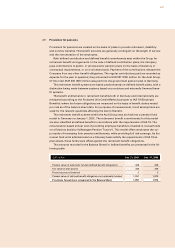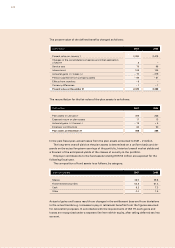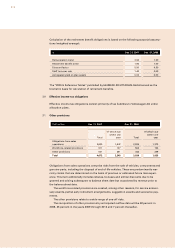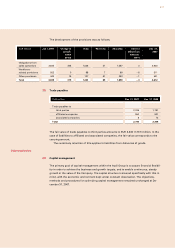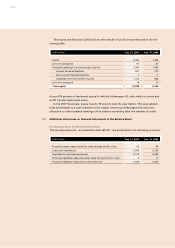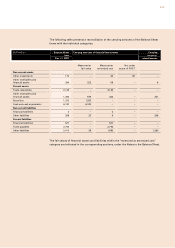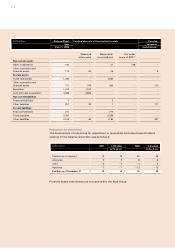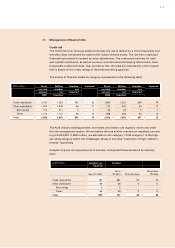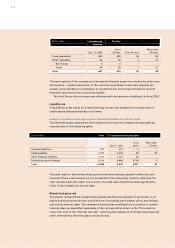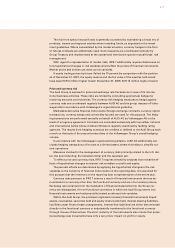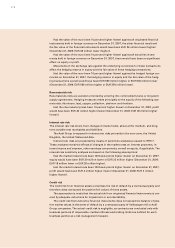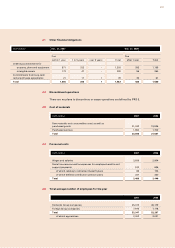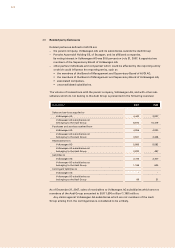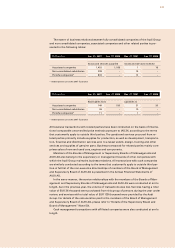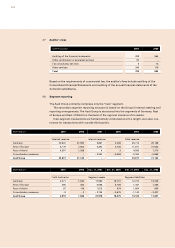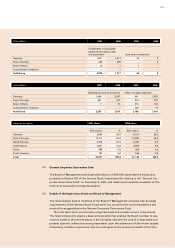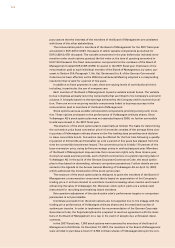Audi 2007 Annual Report Download - page 220
Download and view the complete annual report
Please find page 220 of the 2007 Audi annual report below. You can navigate through the pages in the report by either clicking on the pages listed below, or by using the keyword search tool below to find specific information within the annual report.
217
The risk from special mutual funds is generally countered by maintaining a broad mix of
products, issuers and regional markets when investing funds, as stipulated in the invest-
ment guidelines. Where necessitated by the market situation, currency hedges in the form
of futures contracts are additionally used. Such measures are coordinated centrally by
Group Treasury and implemented at the operational level by the special mutual funds’ risk
management.
With regard to representation of market risks, IFRS 7 additionally requires disclosures on
how hypothetical changes in risk variables would affect the prices of financial instruments.
Market prices and indices can serve as risk variables.
If equity trading prices had risen (fallen) by 10 percent by comparison with the position
as of December 31, 2007, the equity reserve and the fair value of the equities held would
have been EUR 6 million higher (lower) (December 31, 2006: EUR 12 million higher (lower)).
Price and currency risk
The Audi Group is exposed to price and exchange rate fluctuations in view of its interna-
tional business activities. These risks are limited by concluding appropriate hedges for
matching amounts and maturities. The currency risk hedging measures to hedge against
currency risks are coordinated regularly between AUDI AG and the group treasury of Volks-
wagen AG in accordance with Volkswagen’s organizational guideline.
Marketable derivative financial instruments (foreign exchange contracts, currency option
transactions, currency swaps and commodity futures) are used for this purpose. The hedg-
ing transactions are performed centrally on behalf of AUDI AG by Volkswagen AG on the
basis of an agency agreement. Contracts are concluded exclusively with top-caliber national
and international banks whose creditworthiness is regularly examined by leading rating
agencies. The results from hedging contracts are credited or debited to the Audi Group each
month on the basis of the proportionate share of the Volkswagen Group’s overall hedging
volume.
In accordance with the Volkswagen organizational guideline, AUDI AG additionally con-
cludes hedging transactions of its own to a limited extent, where this helps to simplify cur-
rent operations.
Measures involved in the management of currency risks primarily related to the U.S. dol-
lar, the pound sterling, the Canadian dollar and the Japanese yen.
To reflect price and currency risks, IFRS 7 requires sensitivity analyses that reveal the ef-
fects of hypothetical changes in relevant risk variables on profit and equity.
The periodic effects are determined by applying the hypothetical changes in the risk
variables to the inventory of financial instruments on the reporting date. It is assumed for
this purpose that the inventory on the reporting date is representative of the entire year.
Currency risks pursuant to IFRS 7 arise as a result of financial instruments that are de-
nominated in a currency other than the functional currency and are of a monetary nature.
Exchange rate variances from the translation of financial statements into the Group cur-
rency are disregarded. All non-functional currencies in which the Audi Group enters into
financial instruments are fundamentally treated as relevant risk variables.
Within the Audi Group, the principal originated monetary financial instruments (liquid
assets, receivables, securities held and equity instruments held, interest-bearing liabilities,
liabilities under finance lease arrangements, interest-free liabilities) are either denominated
directly in the functional currency or substantially transferred to the functional currency
through the use of derivatives. The short maturity of the instruments also means that poten-
tial exchange rate movements have only a very minor impact on profit or equity.


